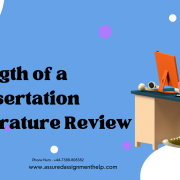Strategic objectives of Emirates Airlines
Critical analysis of and objectives of the organization strategies
From the point of view of strategic direction, it is very important to be clear about the three basic concepts that should serve as a guide for Emirates Airlines’ performance in the future: the mission, vision and strategic objectives. These concepts are closely related to each other and can be analyzed separately. Its strategic goal is to manage profitable economic growth through the creation of a genuinely global distributions network, the extension of value to its customers’ supply chains and the continuous emphasis on service enhancement and cost control in creative product solutions. Their commitment to investing in their people, safety, technology and brand is setting them on the path to achieving the vision of being the world’s most admired travel service provider (McKechnie et al, 2008).
Since the company was founded, its goal has been to become a global airline. As a strategy to achieve this goal, Emirates seeks to fly to the most possible destinations, currently achieving that almost 70% of the passengers of the airline. Analyzing this strategic objective, it can be said that it is adequate since it is consistent with the mission and vision of the company, has a long-term time horizon, and is quite ambitious in terms of scope. The organization strives to (1) make civil aviation safe, leading, and sustainable over time, (2) build and maintain leadership in the market, (3) make calculated decisions with increasingly innovative ideas, (4) maintain high standards of business ethics, and (5) comply with the obligations towards society and the environment. This second objective follows the same strategy as the main objective, that is, it is quite adequate and has a long-term time horizon. It can be said that it is an open and ambitious objective and that according to its nature it is both a financial and strategic objective (O’Connell, 2011).
- Progress in achieving the strategic aims
- Diagnostic and analytical tools
The diagnostic and analytic tools used to evaluate the progress of the strategic objectives are SWOT analysis of Emirates Airlines, Porter’s five force analysis, PESTEL Analysis, etc. The SWOT analysis is performed using high-level model at the beginning of Emirates Airlines’ strategic planning. Strengths and weaknesses are considered internal factors, that is, they are part of the Emirates Airlines, and opportunities and threats are external factors that are part of the UAE aviation environment (O’Connell, 2006). Porter’s five force analysis is performed to evaluate the Emirates Airlines’ level of competition can be measured with a focus on market profitability. The PESTEL Analysis is important tool for diagnosing the strategic environment of Emirates Airlines, which consists of evaluating the aviation industry and thus being prepared to welcome opportunities or prevent threats. The PESTEL Model analyzes the Political, Economic, Social, Technological, Ecological and Legal environment of Emirates Airlines (McKechnie et al, 2008).
- Expectations of the stakeholders and factors influencing strategies in the future
Stakeholder research aims at defining and explaining stakeholders and assessing their respective priorities about the competitive impact of the future. In planning and development, execution, and assessment and review, it is used in the framework of policies and programmes. It is a valuable method for handling problems such as who can be considered and what is the right approach for managing a single player. A business approach should be used to recognise possible business partners and supporters for project delivery. It also tells about the future threats to Emirates airlines’ performance. The Emirates will also map out all stakeholders that may be aware about the project and can determine the project’s consequences or effects (O’Connell, 2011).
- Analyse, interpret and produce an evaluation on the existing organizational strategy
The analysis of the organizational strategy emphasizes on use of the latest technology to create the first customer-centric company in the tourism industry. The Emirates Group, made up of Emirates airline and airport service provider with new information-driven enterprise-wide transformation strategy, Company and decision-making reinventing focused on smart technologies, big data and in-time research. The aim is to turn the two emirates with their customers-centered commodity in the aviation industry (O’Connell, 2006).
- Present strategies
- Alternative strategies to achieve the organizational objectives
This strategy of transformation would provide benefits at all levels and industry divisions, including customer service, business units and administration. With its introduction, our overall goal will be to intelligently redefine consumer service. This programme will offer huge benefits to all business units. It can be accomplished by establishing a personal link with each one at a degree unmatched in the history of air travel. Cross-over the Emirates Airlines is used to do this and this new approach for transition lets us lay the foundation. The study will discuss emerging innovations and concepts clearly to find areas in which the market model can be strengthened. Any of the areas we plan to fund are big data, prediction, artificial intelligence, robotics or free outsourcing of project (O’Connell, 2011).
- Present strategies sufficient to achieve organizational goals
To achieve this aim, the Emirates Community will set up a team that is headed by a senior manager with the requisite authority, expertise and support to lead this sustainability change plan through the organization. To achieve this goal, it will work together. Emirates is focused on a more demanding audience who is willing to pay more for a better service. One of its most ambitious goals was to position itself as of the main airlines in the world and give air transport a value-added high quality in service and in this way became a leader in the market. By targeting a more demanding audience with greater capacity spending allows Emirates to be profitable and have investment potential and increase (McKechnie et al, 2008). The brand is the main asset of a company, that is why Emirates uses the unique Brand strategy. All the services it offers are identified by the same and unique name, which today is synonymous with high quality and modernity. Currently, it is considered the most valuable brand and Emirates as a brand it goes beyond the physical attributes it offers with the great feeling of being able to enjoy a trip with all the comforts. When entering the UAE aviation industry, Emirates must maintain the brand that already has a great position worldwide because it will be of great help to associate it with quality and it will boost the demand (Nyarko, 2010).
- Existing strategy in achievement of organizational objectives
In the air transport business, companies need to grow to be more competitive, therefore it is key to rely on the Expansion Matrix of Product / Market or Ansoff in order to identify the growth opportunities that has Emirates.
? Acquisition strategies: Emirates invested millions of dollars in the purchase of Boeing 777 and Airbus A380 aircraft as part of its decision to handle only three types of aircraft together with the Airbus A330/A340 and to this way it managed to optimize the deployment of its pilots and standardized the customer service experience effectively (Nataraja, & Al‐Aali, 2011).
? Expansion strategy: a corporation as large as Emirates seeks to expand globally, following its goal of connecting more and more cities expands its service to Africa, Europe, East Asia, Australia and now with the possibility of placing its hub to have more presence in the South American region (Nataraja, & Al‐Aali, 2011).
- Current position of the organization in its accomplishment of strategic objectives
Product Development: Globally Emirates is in the position of existing markets with new products, so he used this strategy and focused its efforts on hiring much more comfortable and innovative which made them more attractive to a more demanding audience and the growth that it has over the years that it has been operating is due to the large fleet of modern aircraft that operates in different countries of the world (Lohmann, & Spasojevic, 2018).
Market Development: evaluating the possibility of placing its hub. This strategy would be developed following its objective of investing and expand into emerging markets with large populations and few flight options. So that Emirates can create a global network system must manage profitable growth and identify central airports and with access to new destinations. Even with the new expansion that has already been implemented, taking into account that currently there are no airlines that offer so much technology in air transport and with an audience with spending capacity. In the long-term Emirates could also operate in the future (Lohmann, & Spasojevic, 2018).
1. Strategic options.
Critical analysis of the objectives of the organization in strategic planning
Emirates like other Gulf airlines care about improving the quality and experience onboard unlike others. North American and European airlines focus more on low fares cost and in reducing amenities. Emirates would enter a new market as an option of direct transportation that connects South America with the Middle East in modern, comfortable aircraft with excellent service on board to win new customers, As part of the Emirates differentiation strategy, they continue to innovate and promote the aeronautical market to the development of aircraft that offer more services and more comfort especially for more demanding customers and long-haul flights (Redpath et al, 2017). Emirates is characterized by to be a proactive corporation in innovation and to stay in that position must work on the receptive anticipation involved in anticipating the events and creative anticipation that allows creating solutions, as differentiated care for children or differentiated services in premium classes. Emirates is focused on a more demanding audience who is willing to pay more for better service (Grimme, 2011).
All companies seek to distinguish themselves in the market in which they operate and Emirates is not the exception. It differentiated itself and positioned itself as the airline that innovated, was the first to hire the double-decker A380 aircraft, which later was commissioned and purchased by its competitors. Emirates has managed to achieve a good positioning for the quality of the service it provides, knows how to meet the needs and passenger requirements to make a trip a great experience. In each flight, there is always a crew member from the same destination, who will facilitate the communication and the attention provided will be excellent. Emirates constantly innovates its service with the latest technology and comfort, it also includes attributes valued by passengers like the bar service, spa and showers on board (Nyarko, 2010).
2. Creating a strategic plan
Critical evaluation of the strategic plan
As a consequence, it can be said that Emirates uses the strategy of positioning for more that implies offering a more exclusive service and charging a higher price to be able to bear the higher costs. This strategy is not only based on superior quality but also on prestige and Emirates is very prestigious that reflects a more sophisticated status and lifestyle of its passengers. By placing your hub in Peru, the customers it will attract will be sophisticated and with a capacity higher than average purchasing power, who are willing to pay more for more quality and comfort (Grimme, 2011). In this way, it will be able to position itself as a top airline in the newer markets. These promotions are aimed at agencies that can access better ticket rates, which can drive the purchase decision with Emirates, as well as being able to place in the same agencies and platforms Emirates advertising, where the types of travel cabins are shown, main destinations, and competitive advantages. Emirates became one of the largest airlines in the world because it carried out million-dollar investments in improving the air transport service, making innovations in service that no other airline has ever made. In addition, Emirates operates with great success with its strategically well-located hubs with favorable geographical and climatological conditions that facilitate the operations of flight. By operating with only three aircraft models Emirates made its operations perform satisfactorily, focusing on providing a differentiated service and high quality. It is perceived as a luxury airline in which many people aspire to be able to travel (Redpath et al, 2017).
Selected strategies to address the potential problems
Emirates would be the first airline to enter the remote market with a fleet of modern aircraft such as the Airbus A380 and it would be in the Blue Ocean position because it would be the only travel option with the latest in technology. Under standardization strategy, Emirates will be able to enter the remote markets maintaining its quality standards, complying with a protocol established service around the world, and highly qualified crew personnel. It will comprise a modern fleet of aircraft with which it currently operates and all the comforts it offers with varied gastronomic and diverse entertainment platforms (Grimme, 2011). Emirates is expected to deliver on quality promised regardless of the country from which it is approached. Emirates adapts some of the services it offers always on the menu there is a gastronomic proposal from the country of destination. The services Emirates offer cannot be touched or used until the purchase of the air ticket is made, the client may access the services offered once you board the travel cabin that chosen, with the promise of arriving at the destination feeling renewed and with excellent service from Emirates (O’Connell, 2006).
Quality is an Emirates hallmark, but it varies depending on the type of cabin, the First-Class cabin has higher attributes, varied and more elaborate gastronomy, bar on the second level, spa, option of showers, among other services of a higher category compared to the Tourist Class. It is also possible to analyze the variability of the service in the type of attention received from the crew, who although all are trained to provide excellent care any crew member may not be very cordial causing dissatisfaction to the passenger, to prevent the service changes and Emirates loses prestige, it will have to carry out constant training and standardize the service (Ayish, 2005).
The selective Distribution Strategy that Emirates develops is selective distribution because you can only buy airline tickets on both Emirates’ own internet platforms and others that exist on the web and through travel agencies and offices of Emirates. Being an international company requires standardized advertising that can be understood around the world, Emirates encompasses its creative elements to raise awareness of the high quality it offers, with its “Fly Better” slogan. This type of distribution allows the intermediary to know the Emirate’s characteristics, such as the quality of service that makes it an excellent score on the web, as well as in travel agencies know that Emirates is synonymous with convenience, comfort, and quality. Many marketing efforts that Emirates performs are focused on communicating the excellent service that provides the end-user, they seek that the client feels identified with the fleet distinction and feel you must travel with Emirates in order to satisfy all the comfort needs that a trip requires (Grant et al, 2007).
3. Evaluation, monitoring, and review of the plan
Emirates develops a management tool to improve customer service clients called Paradise, where the crew takes note of preferences or actions of customers to be able to remember them and on the next flight give them more attention that will make the flight experience much better than the previous one. It will lead the customer to loyalty to Emirates this strategy can be applied to a global level. While Emirates has a high standard of quality of service this could always improve, such as giving compensation for delayed flights or lost luggage (Grant et al, 2007). The logistics handling makes this situation almost non-existent, it could eventually occur and would affect prestige, giving compensation will make the client not feel disappointed. Even taking into consideration that a disappointed customer shares with more people their bad experience than a customer with a satisfactory experience. Using control systems would also be of great help to maintain the quality of the service, collect information from all kinds of experiences, conduct surveys of satisfaction and a suggestion form will make Emirates know more about its customers because passengers vary according to their country of origin and in this way, it could offer a more personalized type of attention (Redpath et al, 2017).
Impact of strategic plan to achieve the organizational objectives.
Value-added prices: Emirates instead of reducing its prices like most airlines add improvements to their aircraft fleet and services it provides. In this way, it manages to differentiate its offer and support prices relative to the competition, even when implementing new connection routes and more offices globally.
Prices according to demand: prices vary according to the intensity of demand. This means that if the demand for tickets is high and the ticket search is repetitive prices tend to rise.
Skim: the prices that Emirates manages are higher than the competition because they take care of and invest in high quality rather than in minimizing costs. Skim prices are mostly in First Class cabins and Businesses that are aimed at a segment willing to pay the prices established and generate profit.
Profit margin: Emirates has a fairly high-profit margin that allows consolidating millionaire aircraft purchases to continue growing and expanding its offer of quality air transport (Ayish, 2005).











